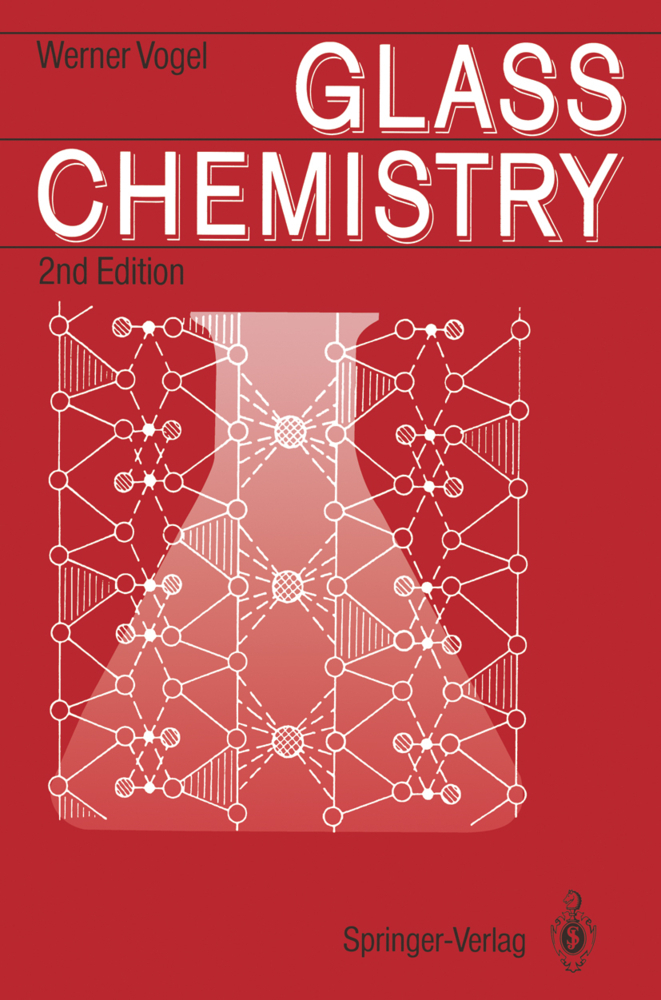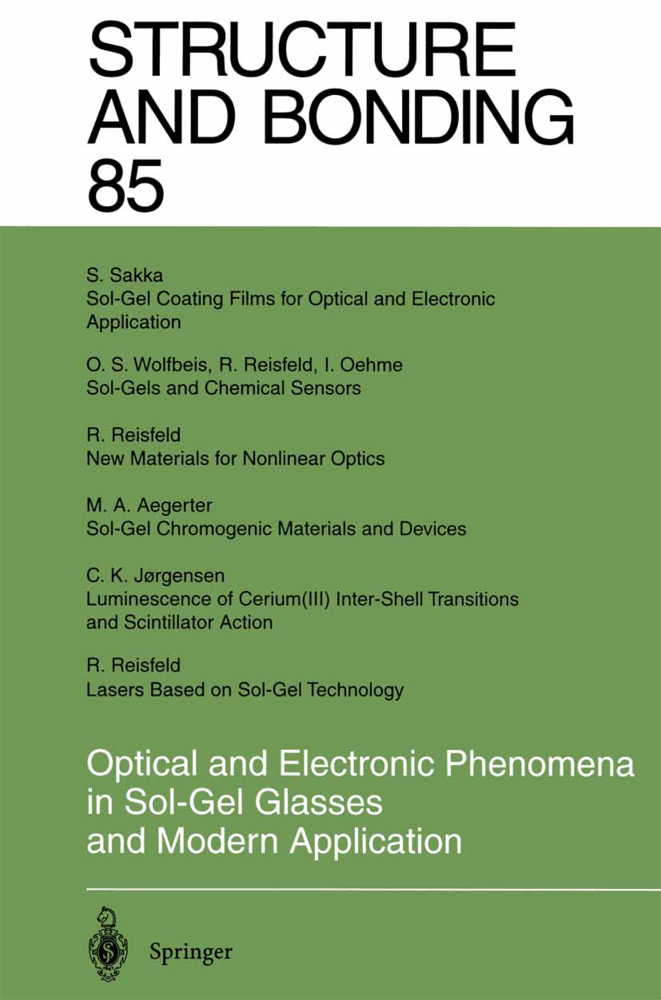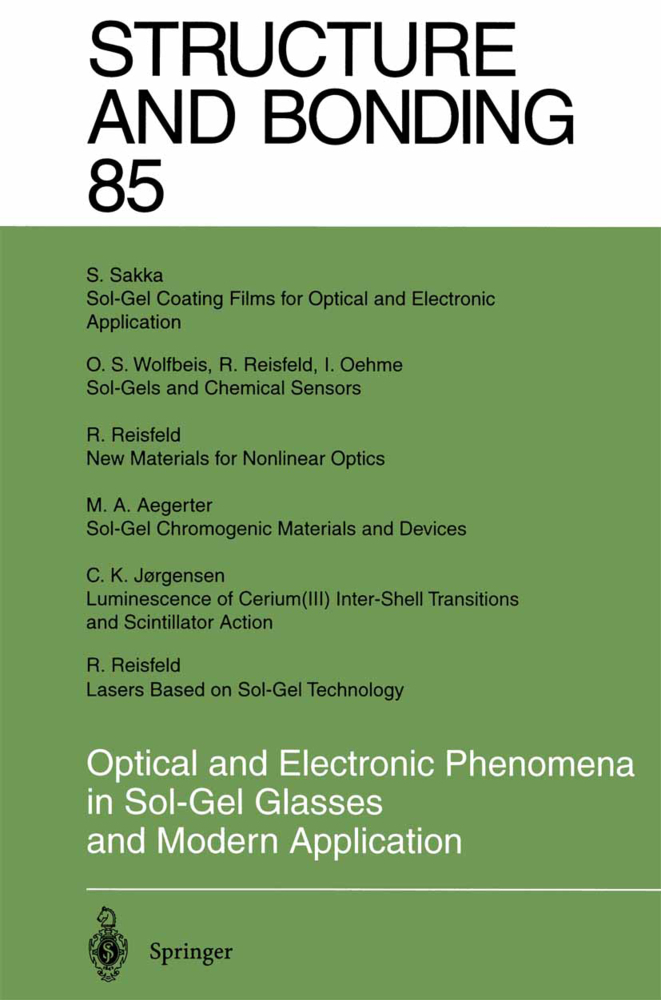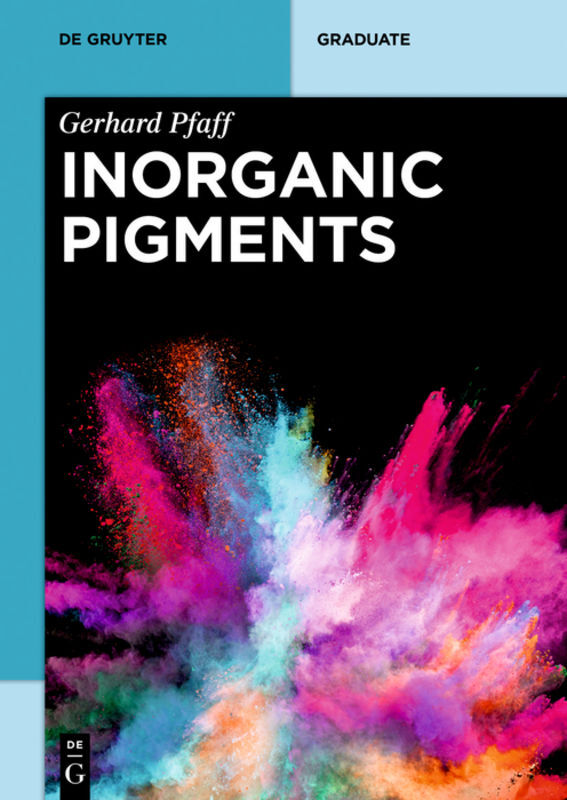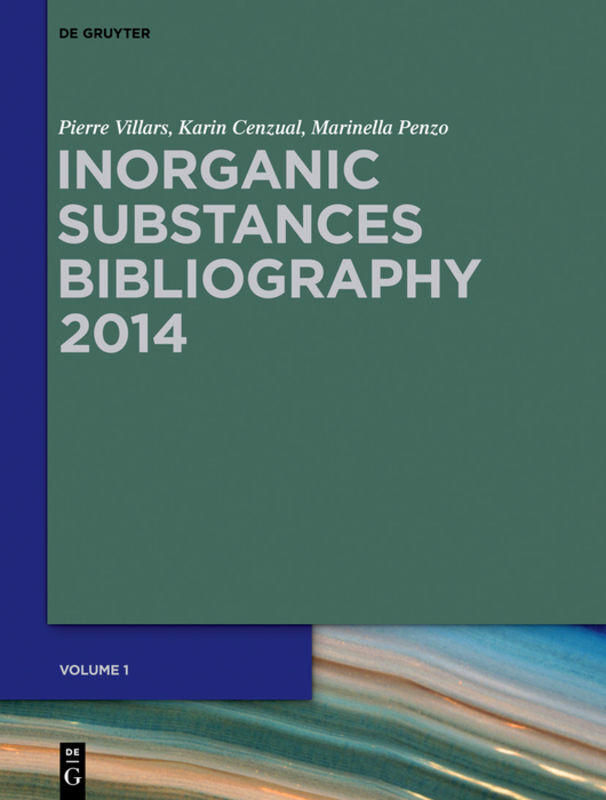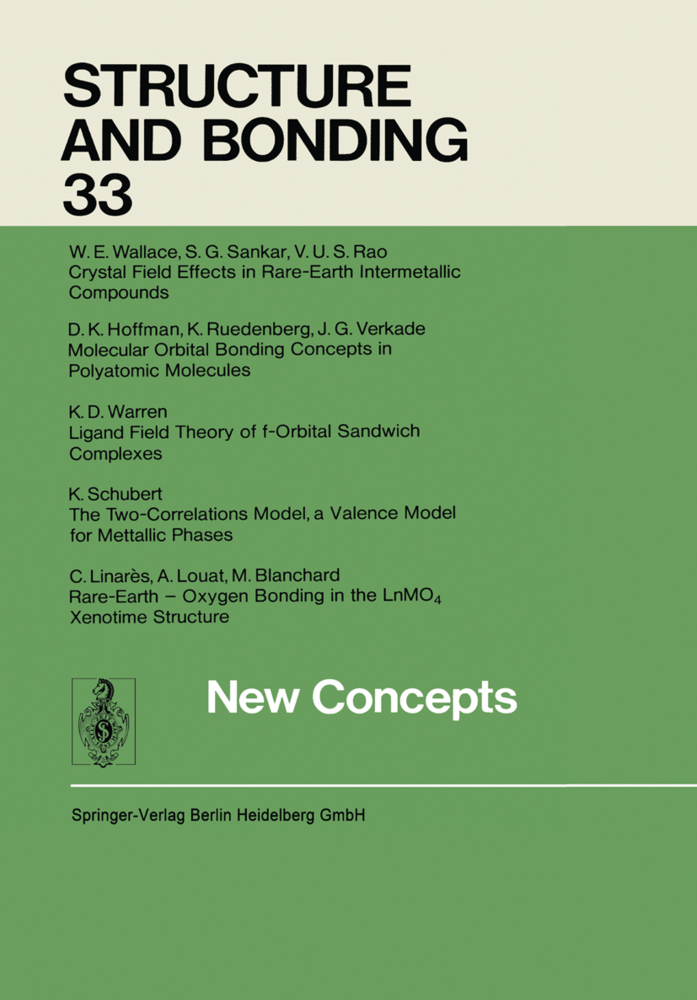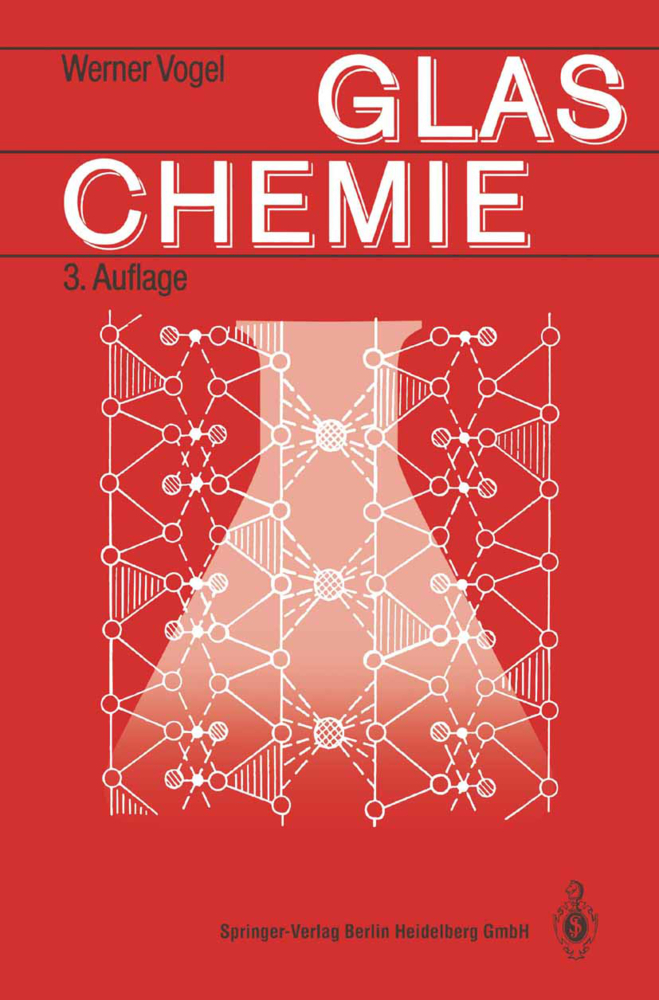Glass Chemistry
Glass Chemistry
Glass Chemistry is concerned with the relation of chemical composition, structure and properties of various glasses. The book has been translated from the third German edition, which serves as a textbook for university students in materials sciences and a reference book for scientists and engineers in glass science and production. The central themes of the book are the chemistry and physics of glass. Detailed knowledge of the compositional and structural facts is the basis for the systematic development of new glasses as construction and optical materials.
Glass Chemistry is an interdisciplinary book on the borderlines between chemistry, physics, mineralogy and even biology and medicine. The book represents a well balanced treatment for students, scientists and engineers.
1.2 History of the Chemistry of Optical Glass
1.3 History of Technical Glass
2 Freezing of a Melt to a Vitreous Solid
2.1 Fusion and Crystallization. General
2.2 Significant Differences Between Crystalline and Non-crystalline (Glassy) Solids
2.3 Standard Viscosity Temperatures for Solidification of Glasses
2.4 Annealing of Optical Glass
3 Structural Elements of Silicates
3.1 The SiO4 Tetrahedron as the Basic Building Block of Silicates
3.2 Building Units of Natural Crystalline Silicates
4 Classical Theories of Glass Structure
4.1 Glass Structure According to Tammann (since 1903)
4.2 Glass Formation According to Goldschmidt
4.3 The Zachariasen-Warren Network Theory
4.4 Extension of the Network Theory by Dietzel
4.5 Additional Concepts Supplementing the Network Theory
4.6 Lebedev's Crystallite Theory
4.7 Further Development of the Crystallite Theory
4.8 Kinetic Theory
5 Methodology in Glass Research
5.1 Structure of Liquids and Melts
5.2 The Nuclear Magnetic Resonance Method as Applied to Glass Research
5.3 Electron Microscopy
6 Microphase Separation
6.1 Early History
6.2 Electron Microscopy Evidence for Immiscibility Phenomena in Glasses
6.3 Theoretical Treatment
6.4 Experimental Evidence
7 Structure and Properties of Colorless Glasses
7.1 Silica Glass
7.2 Alkali Silicate Glasses
7.3 Alkaline Earth and Alkali-Alkaline Earth Silicate Glasses
7.4 Borate and Borosilicate Glasses
7.5 Glasses of High Lead Content
7.6 Phosphate Glasses
7.7 Tellurite Glasses
7.8 Beryllium Fluoride Glasses - "Model Glasses"
7.9 Zirconium Fluoride Glasses
7.10 Germanate Glasses
7.11 Glasses Containing Arsenic Oxide
7.12Glasses Containing Antimony Oxide
7.13 Glasses Containing Bismuth Oxide
7.14 Limited Glass Formation in Systems of Exclusively Scientific Interest
7.15 Metal Glasses
7.16 Vitreous Carbon
7.17 The Sol-Gel Method for Production of Glasses and Glass Ceramics
8 New Optical High-Performance Glasses
8.1 Fundamental Principles of the Dispersion Behaviour of Glasses
8.2 Change of the Dispersion with the Introduction of Additional Absorption Centers
8.3 Optical Glasses with Unusual Partial Dispersions
8.4 Athermal Optical Glasses
8.5 Non-linear Refraction
8.6 Prerequisites on the Raw Material for the Production of Optical Glasses
9 Structure and Properties of Colored Glasses
9.1 General
9.2 Absorption of Colorless Base Glasses
9.3 Glasses Colored by Ions
9.4 Striking Glasses
9.5 Glasses Colored by Metal Colloids (Ruby Glasses)
9.6 IR-Absorbing Glasses (Heat-Absorbing Glasses)
9.7 IR-Transmitting Glasses
9.8 Opacified Glasses
10 Crystallization of Glasses
10.1 General
10.2 Theoretical Considerations
10.3 Crystallization as a Defect in Glass
10.4 Controlled Crystallization
10.5 Bioactive, Piezoelectric, Phosphate Glass Ceramics Free of Silica
10.6 Sintered and Special Glass Ceramics
11 The Strength of Glass
11.1 Theoretical Strength
11.2 Effective Strength: Attempts at Theoretical and Practical Explanations
11.3 Strengthening Methods in Practice
12 Interaction Between High Energy Radiation and Glass
12.1 General Considerations
12.2 Photosensitive Glasses Based on the Formation of Metal Colloids
12.3 Photosensitive Glasses Based on Partial Crystallization in Lithium and Barium Silicate Systems
12.4 Dosimeter Glasses
12.5 Photochromic Systems and Glasses
12.6 Laser Glasses
12.7 Radiation Protection andRadiation-Resistant ("Protected") Glasses
12.8 Transmission Changes of Colored Glasses under ? Irradiation
12.9 Solarization
13 Survey of the Physical Basis of Some Glass Properties
13.1 Introduction
13.2 Refraction of Light, Dispersion and Abbe's Value
13.3 Density
13.4 Molar Refraction
13.5 Thermal Expansion
13.6 Viscosity
13.7 Strain
13.8 Surface Tension
13.9 Heat Conductivity, Specific Heat
13.10 Electrical Conductivity
References.
Glass Chemistry is an interdisciplinary book on the borderlines between chemistry, physics, mineralogy and even biology and medicine. The book represents a well balanced treatment for students, scientists and engineers.
1 Historical Development of Glass Chemistry
1.1 The Beginnings of Glass Research1.2 History of the Chemistry of Optical Glass
1.3 History of Technical Glass
2 Freezing of a Melt to a Vitreous Solid
2.1 Fusion and Crystallization. General
2.2 Significant Differences Between Crystalline and Non-crystalline (Glassy) Solids
2.3 Standard Viscosity Temperatures for Solidification of Glasses
2.4 Annealing of Optical Glass
3 Structural Elements of Silicates
3.1 The SiO4 Tetrahedron as the Basic Building Block of Silicates
3.2 Building Units of Natural Crystalline Silicates
4 Classical Theories of Glass Structure
4.1 Glass Structure According to Tammann (since 1903)
4.2 Glass Formation According to Goldschmidt
4.3 The Zachariasen-Warren Network Theory
4.4 Extension of the Network Theory by Dietzel
4.5 Additional Concepts Supplementing the Network Theory
4.6 Lebedev's Crystallite Theory
4.7 Further Development of the Crystallite Theory
4.8 Kinetic Theory
5 Methodology in Glass Research
5.1 Structure of Liquids and Melts
5.2 The Nuclear Magnetic Resonance Method as Applied to Glass Research
5.3 Electron Microscopy
6 Microphase Separation
6.1 Early History
6.2 Electron Microscopy Evidence for Immiscibility Phenomena in Glasses
6.3 Theoretical Treatment
6.4 Experimental Evidence
7 Structure and Properties of Colorless Glasses
7.1 Silica Glass
7.2 Alkali Silicate Glasses
7.3 Alkaline Earth and Alkali-Alkaline Earth Silicate Glasses
7.4 Borate and Borosilicate Glasses
7.5 Glasses of High Lead Content
7.6 Phosphate Glasses
7.7 Tellurite Glasses
7.8 Beryllium Fluoride Glasses - "Model Glasses"
7.9 Zirconium Fluoride Glasses
7.10 Germanate Glasses
7.11 Glasses Containing Arsenic Oxide
7.12Glasses Containing Antimony Oxide
7.13 Glasses Containing Bismuth Oxide
7.14 Limited Glass Formation in Systems of Exclusively Scientific Interest
7.15 Metal Glasses
7.16 Vitreous Carbon
7.17 The Sol-Gel Method for Production of Glasses and Glass Ceramics
8 New Optical High-Performance Glasses
8.1 Fundamental Principles of the Dispersion Behaviour of Glasses
8.2 Change of the Dispersion with the Introduction of Additional Absorption Centers
8.3 Optical Glasses with Unusual Partial Dispersions
8.4 Athermal Optical Glasses
8.5 Non-linear Refraction
8.6 Prerequisites on the Raw Material for the Production of Optical Glasses
9 Structure and Properties of Colored Glasses
9.1 General
9.2 Absorption of Colorless Base Glasses
9.3 Glasses Colored by Ions
9.4 Striking Glasses
9.5 Glasses Colored by Metal Colloids (Ruby Glasses)
9.6 IR-Absorbing Glasses (Heat-Absorbing Glasses)
9.7 IR-Transmitting Glasses
9.8 Opacified Glasses
10 Crystallization of Glasses
10.1 General
10.2 Theoretical Considerations
10.3 Crystallization as a Defect in Glass
10.4 Controlled Crystallization
10.5 Bioactive, Piezoelectric, Phosphate Glass Ceramics Free of Silica
10.6 Sintered and Special Glass Ceramics
11 The Strength of Glass
11.1 Theoretical Strength
11.2 Effective Strength: Attempts at Theoretical and Practical Explanations
11.3 Strengthening Methods in Practice
12 Interaction Between High Energy Radiation and Glass
12.1 General Considerations
12.2 Photosensitive Glasses Based on the Formation of Metal Colloids
12.3 Photosensitive Glasses Based on Partial Crystallization in Lithium and Barium Silicate Systems
12.4 Dosimeter Glasses
12.5 Photochromic Systems and Glasses
12.6 Laser Glasses
12.7 Radiation Protection andRadiation-Resistant ("Protected") Glasses
12.8 Transmission Changes of Colored Glasses under ? Irradiation
12.9 Solarization
13 Survey of the Physical Basis of Some Glass Properties
13.1 Introduction
13.2 Refraction of Light, Dispersion and Abbe's Value
13.3 Density
13.4 Molar Refraction
13.5 Thermal Expansion
13.6 Viscosity
13.7 Strain
13.8 Surface Tension
13.9 Heat Conductivity, Specific Heat
13.10 Electrical Conductivity
References.
Vogel, Werner
Kreidl, N.
Lopes Barreto, M.
| ISBN | 978-3-642-78725-6 |
|---|---|
| Medientyp | Buch |
| Auflage | 2. Aufl. |
| Copyrightjahr | 2012 |
| Verlag | Springer, Berlin |
| Umfang | XIV, 464 Seiten |
| Sprache | Englisch |

